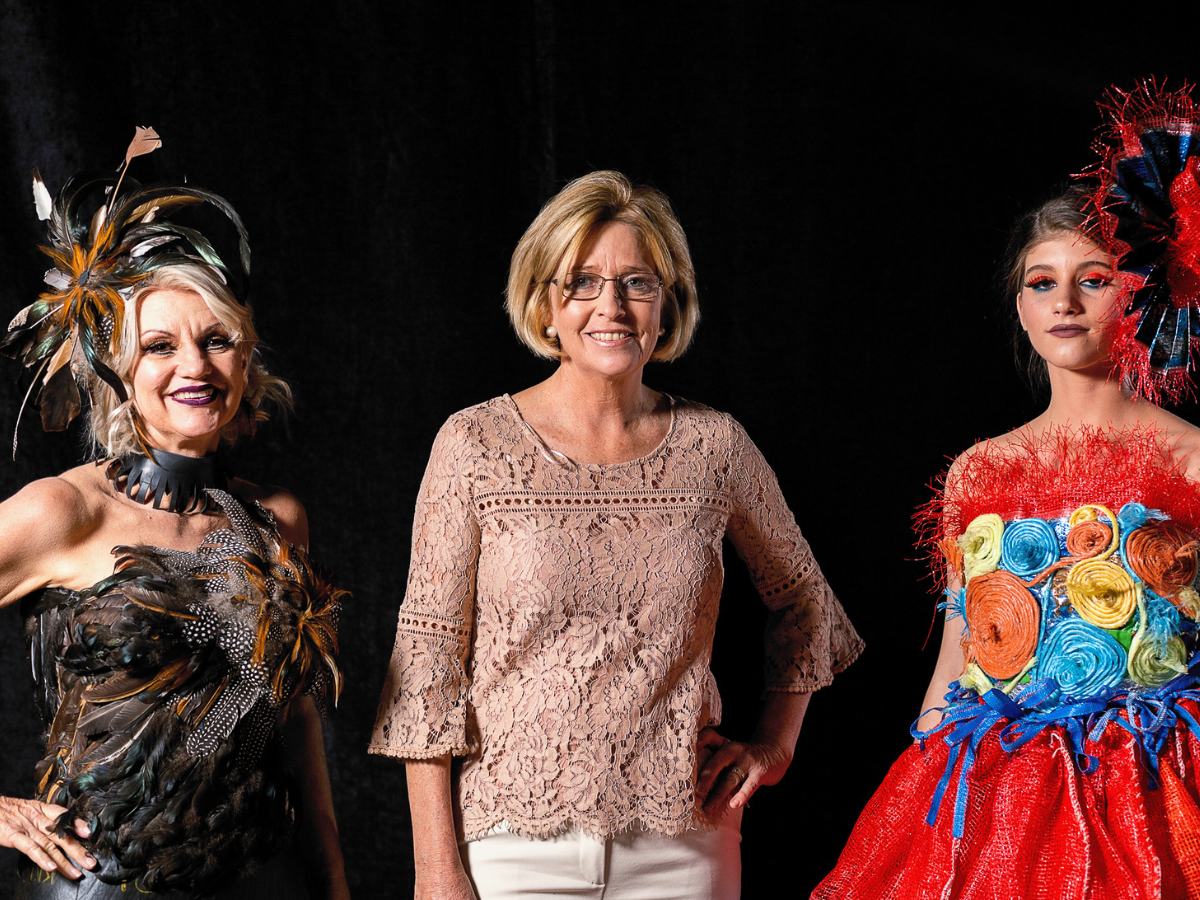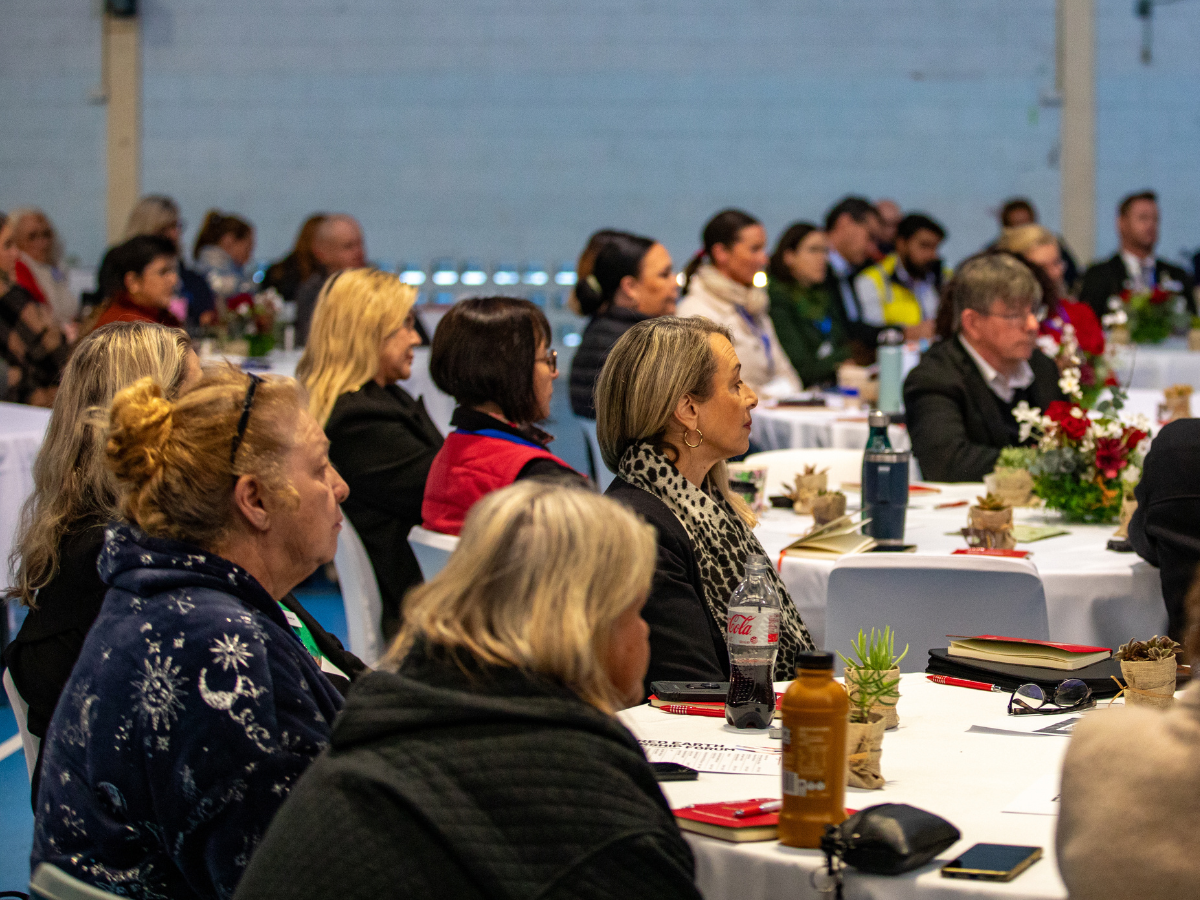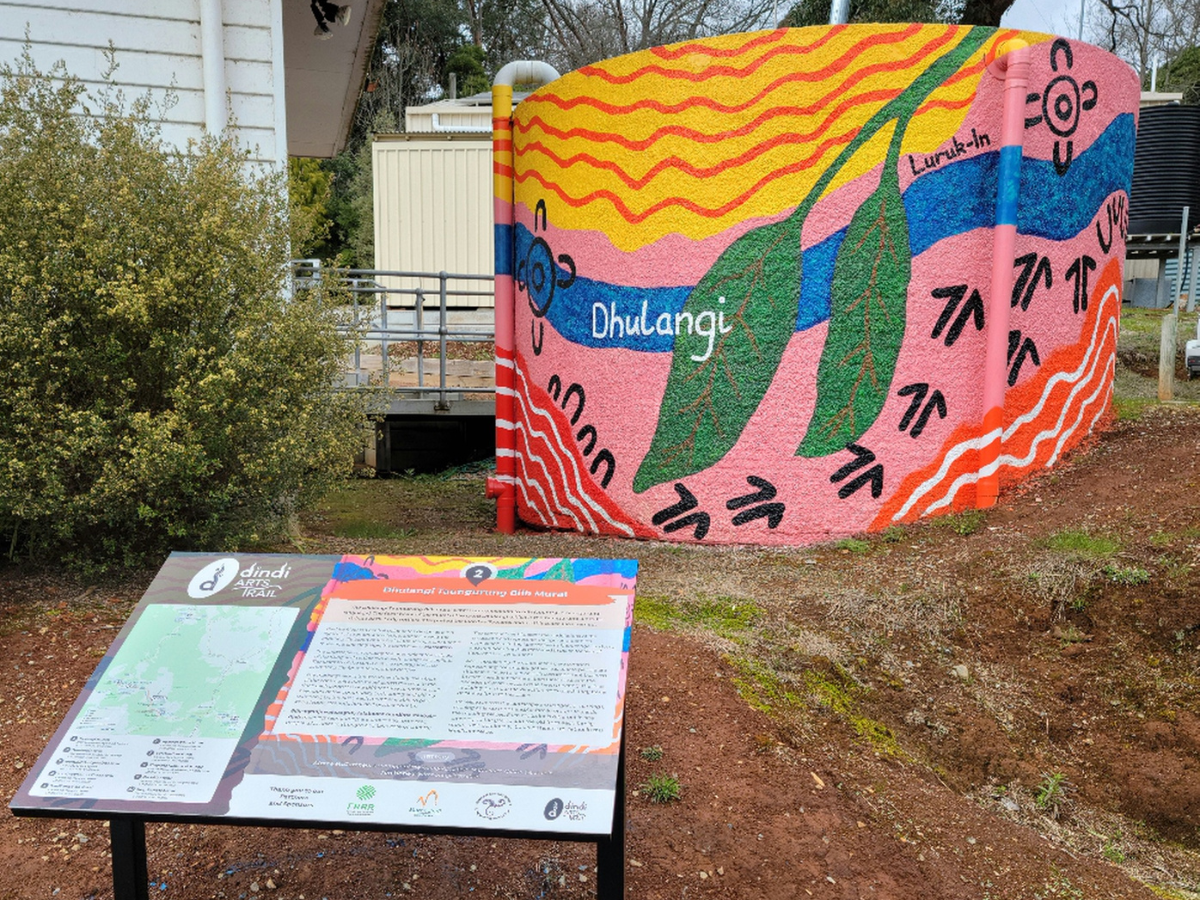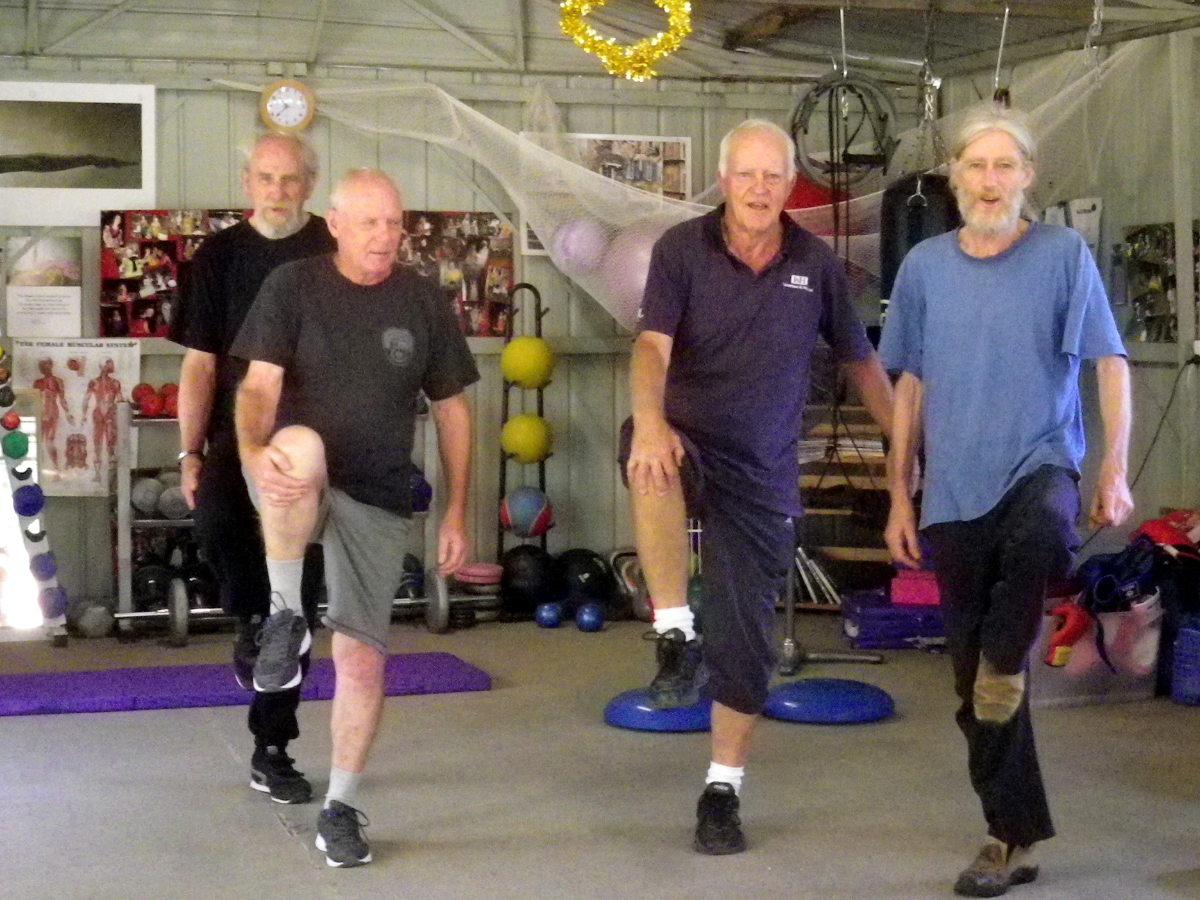Insights: 24 September 2024
FRRR’s CEO, Natalie Egleton, recently spoke at the Social Impact in the Regions Conference. Before participating in a panel discussion that was focussed on addressing challenges in remote, rural and regional Australia, Natalie delivered a brief presentation. The following are her speech notes.
All too often, regional communities are only visible to the rest of the country and to policymakers through a lens of crisis, disadvantage, or as somewhere from which resources needed by others can be extracted.
From the hundreds of community grants and conversations we have at FRRR, we know that is not the narrative regional communities want to focus on. The challenges are definitely there; regional communities live them every day. But what would happen if we flipped the narrative to one where regions are understood, invested in and valued for their intrinsic value – their innovation, intelligence, creativity and contribution to their own and the nation’s wellbeing and economies?
The possibilities are remarkable when we do this. I’m going to share three case studies of communities and organisations that FRRR has partnered with over multiple years as they navigated these very questions. I’m not telling their story on their behalf but sharing what we noticed throughout our funding partnerships with them. They stand out but are by no means the only such organisations and communities. And a hint – there are some common themes about the different types and roles of backbone organisations; the capacity for challenges to catalyse innovation; and why place-based change takes time – sometimes generations.
Red Ridge Interior Queensland
Red Ridge Interior is in Blackall – almost the centre of Queensland. They are an arts organisation at their heart and evolved into so much more during the drought that crippled much of western Queensland in the mid 2000’s until very recently. Their model is one of collaboration that supports outcomes like intergenerational connection, First Nations economic self-determination, women’s health and wellbeing, and leadership development.

The first grant we awarded was just $2,500 to help them build a better business model. We have since supported many of their initiatives. Over the years, as they’ve grown in confidence – and people have built confidence in them –they’ve blown it out of the park.
Red Ridge described themselves as an auspice for local projects – but I would argue that they have played a backbone role for western Queensland.
In remote communities like Blackall, there are fewer services, small, dispersed populations, and narrow economies. They need organisations that can play integrated and multifaceted roles across population groups, industries and join dots in policy and funding systems to make them work for their local context.
One of their activities is the now annual Channel Country Ladies Day – an event with the tagline ‘inspiration in isolation’. It brings together women from across the channel country, right down into Birdsville and further north to Longreach and surrounds.
It was an idea born during the drought, when the load that women were carrying – caring for family, finding ways to generate off-farm income, managing the farm business – was noticed, alongside the fact that they weren’t caring for themselves. This is not any ordinary event; it brings together hundreds of women for reprieve, wellbeing support, fun and skill development. It also builds economic opportunity by creating space for micro-enterprises, and enterprise development. It’s a space for hard conversations and care for people doing hard work.

As the drought’s impacts deepened, Red Ridge saw an opportunity to play a role in ‘finding beauty in the drought’ and created the Dress the Central West event. They partnered with Central West Hospital and Health Service (CWHHS) and Central West Aboriginal Corporation (CWAC) to create the fashion parade of the year, Dress the Central West. Teaming with Fashion designer Claudia Williams from Llani Creative, each outfit represented the history and traditions of the four communities involved in the project – Winton, Blackall, Longreach and Barcaldine.
The event tapped into layers of talent in the community and gave people who were often excluded from opportunities a platform to shine. With support from a fashion designer, communities designed several outfits that best represented their towns, stories and culture in the adversity of drought, using recycled or found material.
The work that Red Ridge and the communities of the Central West faced – and still face – include big challenges, but they have found ways to create energy from within communities to co-create new stories and futures.
Red Earth Community Foundation
Red Earth Community Foundation is one of about 40 place-based philanthropic foundations in Australia – a network that is growing and evolving dynamic community-owned models of generating and redistributing capital in their local communities. Red Earth covers the North and South Burnett and Cherbourg communities in Queensland.

FRRR has partnered with Red Earth since it was a seed of an idea, through many grants and strategic partnerships. It’s a leading model of community mobilisation and transformation from the ground up.
Like many innovations, a crisis was the catalyst for the formation of Red Earth Community Foundation, following a major flood event in 2014. Conversations among a few key people were about what the Burnett needed in 100 years’ time – it was a different vision and one that held a new narrative about its challenges. This was in a context of the Burnett describing the region as the hole in the doughnut – the region that had high needs and one of the highest rates of socio-economic disadvantage in the country. They saw investment flowing everywhere but the Burnett Inland.
Funding to support flood recovery occurred around the same time as funding to support setting up good governance for the emerging Foundation. The latter involved much consultation and education about what a community foundation structure might bring to the Burnett.
There was a space to shift – they could continue blaming and being victims of poor systems, or they could mobilise and create something else. So, they set out on a different path to most community foundations – instead of starting with money, they started with people and developed a community leadership program. More than 200 people have now graduated from the program and are activating opportunities across the region.
In just a decade, Red Earth has become a vital backbone for the region – they are a trusted convenor of community voice and action. Beyond the leadership program, they are facilitating major drought resilience and disaster preparedness initiatives, and brokering opportunities for community benefit from renewable energy projects.
FRRR and Red Earth are currently partnering on the Disaster Resilient: Future Ready program, which is supporting community co-design of disaster resilience across the small towns in the Burnett Inland region. The teams were together at the recent AIDR conference to showcase the work and learnings.
Red Earth’s is a story of people power and a collective decision to adopt an opportunity mindset.
Toolangi

The final example is not of a single organisation but rather a small community – population just 335 – in an area affected by Black Saturday bushfires in 2009; it’s about an hour and a half north east of Melbourne.
In this tiny village, the Community House is the hub and provides a central point of connection and information. It is mostly volunteer run, with a tiny amount of funding for operations and programming. When the fires impacted the town, the Community House was the central organisation for recovery efforts. They had to step up and play a far more complex role in rebuilding the town and people’s lives.
The Community House brought together the ideas and needs of the town and went about gradually planning and actioning – with small amounts of funding as they went. Of course they couldn’t do it all at once. And as such a small town and organisation, nor could they accept too much support all at once. So, FRRR worked alongside them, supporting the community when they were ready and as needs evolved and people were able to do some of the actual implementation.
The focus was on long-term recovery, regeneration, over weeks and months. Support was given in different places, at different times. The support via the Community House similarly took different forms, and as needs evolved, investment went with them. Some of the projects supported by FRRR included strategic thinking about how to approach recovery; a focus on wellbeing; the need to create a place where health and fitness – physical and emotional wellbeing – could support social wellbeing across different groups – students; women; men etc.
The weekly community fitness program had a huge impact on the community as they recovered and found a ‘new normal’ after the fires. People were at risk of becoming isolated and mental health was a growing issue. In a largely ageing community, physical wellbeing was the way in to addressing mental wellbeing. An evaluation of this program found significant reduction in risk factors and increases in wellbeing at a population level. In fact, the program is still running.

They also hosted others including the men’s shed and the community garden – and reactivated spaces in town that could support connection, healing and regeneration. While there were many people involved, one person in particular was, and still is, the glue for this town – she carefully, kindly, and strategically worked with the community to reimagine spaces and opportunities. She did it knowing that they would never attract the big money or media headlines and so worked smartly too – with locally led sustainability as the goal.
That’s often the reality for those working in remote, rural and regional communities – the challenges are there and it’s up to those of us living and working there to find our unique assets and strengths.
These three examples showcase what’s possible if we flip the narrative and invest in communities, especially in backbone organisations that can take carriage of maintaining focus for the long game. They come in different shapes and sizes and, when built from and by community, are vital parts of community infrastructure. The other lesson I’d share, both from my work at FRRR but also as the resident of a small rural community, is to work on the assumption that the money may never come – hard as that is, it can liberate new thinking and opportunity. I hope that these anecdotes encourage you to reconsider your view of remote, rural and regional Australia. It’s not all doom and gloom – even when times are tough. Imagine what might be possible if regions are truly understood, invested in and valued for their innovation, intelligence, creativity and the contribution they make to our nation’s wellbeing and prosperity.

